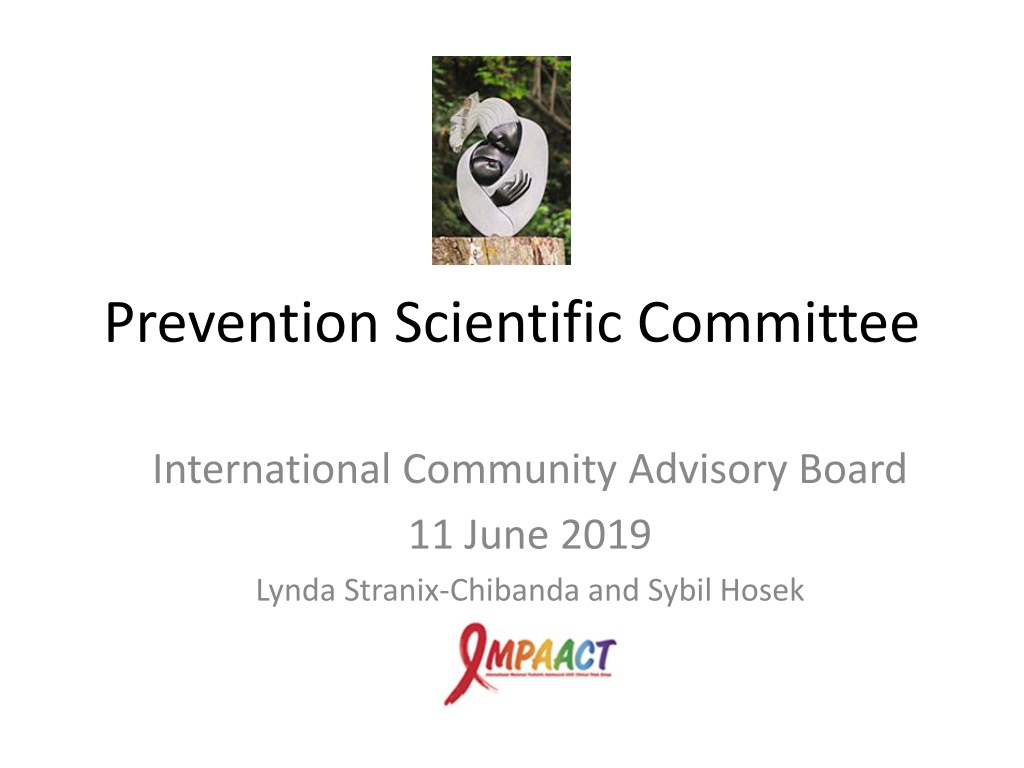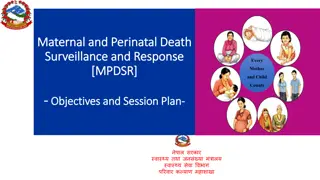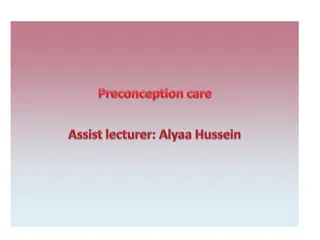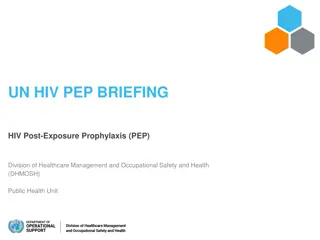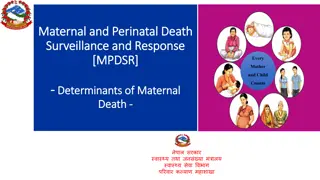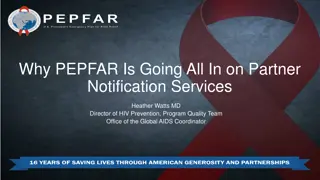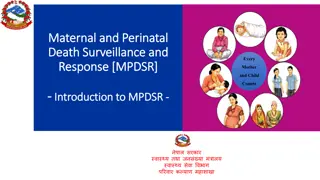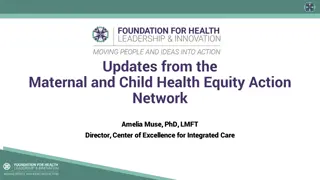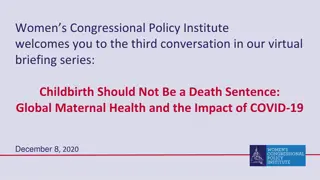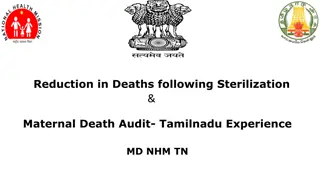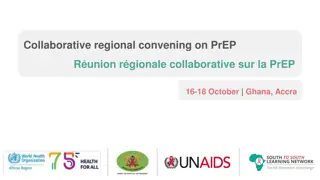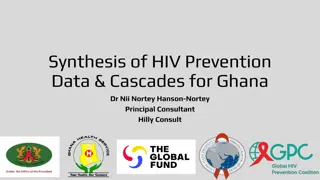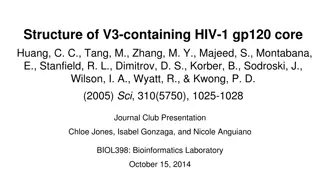Prioritizing Maternal Health: Focus on HIV Prevention Strategies
The Prevention Scientific Committee and International Community Advisory Board emphasized key priorities for pregnant and breastfeeding mothers with HIV infection, such as optimizing current ARV strategies and implementing immune strategies for achieving zero transmission. The discussion also included priorities for mothers without HIV, focusing on primary prevention during pregnancy and lactation. The aim is to improve outcomes, address implementation challenges, and work towards virtual elimination of pediatric HIV through cost-effective interventions.
Download Presentation

Please find below an Image/Link to download the presentation.
The content on the website is provided AS IS for your information and personal use only. It may not be sold, licensed, or shared on other websites without obtaining consent from the author. Download presentation by click this link. If you encounter any issues during the download, it is possible that the publisher has removed the file from their server.
E N D
Presentation Transcript
Prevention Scientific Committee International Community Advisory Board 11 June 2019 Lynda Stranix-Chibanda and Sybil Hosek
Outline Focal populations Key priorities IMPAACT P1112 study update IMPAACT 2009 study update
Focal populations Pregnant and breastfeeding mothers and their infants
Key priorities for mothers with HIV infection 1. Optimise current ARV-based strategy to prevent vertical HIV transmission 2. Immune strategies for getting to zero
Priority for mothers with HIV Optimise current ARV-based strategy to prevent vertical HIV transmission Life long ART recommended in global guidelines Improve outcomes Implementation challenges in coverage, retention, adherence Improve ARVs Less side effects/safer Better control of viral load Less risk of developing resistance Cheaper PROMISE data Treatment SC
Priority for mothers with HIV Virtual elimination of paediatric HIV is possible Continuing the current strategy won t get us to zero need to add something new to ART
Priority for mothers with HIV Immune strategies for getting to zero Passive immunity from broadly neutralising antibodies (bnAbs) P1112 Cost-effectiveness
Key priority for mothers without HIV infection 1. Primary prevention during pregnancy and lactation
Priority for mothers without HIV Primary prevention during pregnancy and lactation A time of heightened risk Oral PrEP recommended in most guidelines Less effective in youth 2009
IMPAACT P1112 Update Passive immunity Protocol Overview Study status Next steps
Passive Immunity Administer pre-formed antibodies Immediate levels of antibodies detectable Only lasts as long as the antibodies last In use for Rabies, Hepatitis B, Varicella Zoster Photo by: cglightNing
IMPAACT P1112 Safety & Pharmacokinetics of Monoclonal Antibody VRC01LS in HIV-Exposed Newborns Phase I study of safety and pharmacokinetics of single and multiple subcutaneous (SC) doses starting at birth ALL infants receive ART to prevent perinatal/ breastmilk HIV transmission Followed on study 96 weeks Primary objectives are safety and PK
Different study groups Different products Different doses Different infant feeding
Group 4 status Enrollment between Jan 2017-Feb 2018 All infants (N=21) received 1st dose; 10 infants received 2nd dose No Grade 3 or 4 adverse events related to VRC01LS Local reactions were common, especially with the first dose; almost all mild and resolved within hours No infants stopped study treatment due to adverse events Ongoing follow-up (N=18) through Feb 2020 3 infants discontinued at 2, 4 weeks & 22 weeks
Different PK with different doses & products
P1112 conclusions so far VRC01LS is well tolerated VRC01LS can be administered at birth and 1-2 times per year to achieve desired levels Broadly neutralizing antibodies are feasible as an additional strategy to prevent mother-to- child transmission of HIV in infants at increased risk of HIV transmission Next steps: New agents VRC07-523LS - increased potency & breadth
IMPAACT 2009 Update Pre-exposure prophylaxis Protocol Overview Study status Next steps
What is PrEP? PrEP means Pre-Exposure Prophylaxis, and it s the use of anti-HIV medications to keep HIV negative people from becoming infected. PrEP is approved by the FDA and has been shown to be safe and effective at preventing HIV infection
IMPAACT 2009 Pharmacokinetics, Feasibility, Acceptability, and Safety of Oral Pre-Exposure Prophylaxis for Primary HIV Prevention during Pregnancy and Postpartum in Adolescents and Young Women and their Infants A 2-part observational trial in HIV-uninfected adolescent and young women who are offered oral PrEP while pregnant and breastfeeding PK Component PrEP Comparison Component
Study Design PK Component 40 mother-infant pairs Establish plasma drug concentrations associated with optimal dosing of oral PrEP during pregnancy and postpartum Findings will guide interpretation of drug levels observed in pregnant women
Study Design PrEP Comparison Component Follow women who choose to start PrEP in pregnancy (~200 pairs) or not (~100 pairs) through 6 months postpartum PrEP adherence DBS drug levels (based on PK component) Maternal adverse events Renal and hepatic function, bone health Adverse pregnancy outcomes Abortion, stillbirth, preterm delivery, SGA Infant safety Death, adverse events, bone health, renal function, growth
Study Sites Kampala, Uganda: Baylor CRS & Makerere University - JHU CRS Blantyre, Malawi (JHU) Harare, Zimbabwe: Harare Family Care, Saint Mary s & Seke North CRSs Johannesburg, South Africa: Shandukani WRHI Mother and Child by Colleen Madamombe 15
PK Comparison Component Status Enrolled March-June 2019 20 pairs in each group Group 1: Enrolled 14 24 wks gestation Group 2: Enrolled 6 12 wks after delivery Monitor and document PrEP administration daily, for 12 weeks In-person (clinic or home) Real-time video call DBS specimens collected weekly for PK testing
PK Comparison Component Status Retention 100% Adherence to DOTS 99.87% 2 doses not directly observed so far Exceptional commitment from participants, site staff, community and protocol team
What will we learn? At this time of particular risk for new HIV infection in young women, 2009 will help us understand more about: PK in pregnancy Adherence to PrEP in young women Safety information to inform the risk:benefit ratio of oral PrEP
